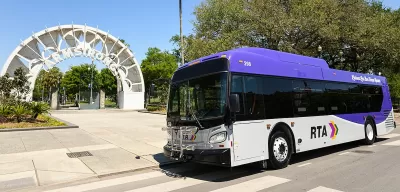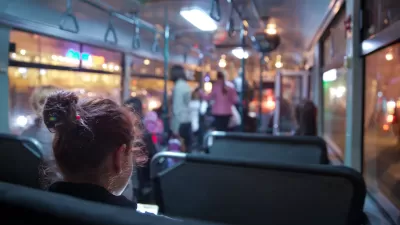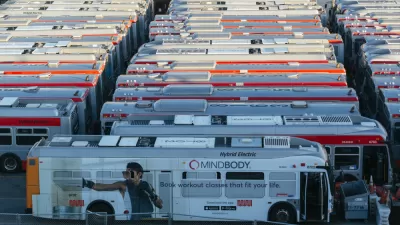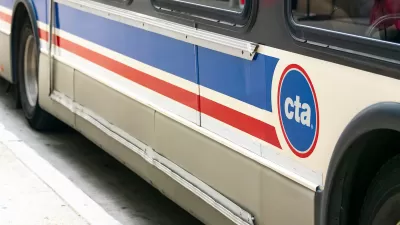Regional transit agencies, already forced to make cuts, are calling for state funding to help them maintain service and access federal grant opportunities.

New Orleans transit riders are suffering from severely reduced service since Hurricane Katrina devastated the city in 2005, according to an analysis from RIDE New Orleans, the Regional Transit Authority (RTA), and Jefferson Parish Transit. “At the moment, the average Orleans Parish resident can access only 35% of jobs in the region within 60 minutes on public transit,” notes Blake Paterson in the Times-Picayune.
Although many New Orleans buses used to run every 10 minutes, the region’s agencies now offer just 60 percent of the service they did in 2004. “Both the RTA and Jefferson Parish Transit are expected to face shortfalls in revenue in the coming years that will make maintaining existing levels of service difficult. And Jefferson Parish is in the process of exiting the RTA, leaving Orleans Parish as the sole participant in what was supposed to be a multi-parish public transit agency.”
RIDE estimates that the agencies need roughly $55 million per year for operating revenues to return to pre-Katrina service levels. Transit officials are calling for more support from the state to supplement local funding, which could help meet federal matching requirements and unlock grant dollars. As of 2022, Louisiana ranked 43rd in the nation for per-capita transit spending.
FULL STORY: Is New Orleans public transit at a crossroads? Advocates call for massive investment

Planetizen Federal Action Tracker
A weekly monitor of how Trump’s orders and actions are impacting planners and planning in America.

Congressman Proposes Bill to Rename DC Metro “Trump Train”
The Make Autorail Great Again Act would withhold federal funding to the system until the Washington Metropolitan Area Transit Authority (WMATA), rebrands as the Washington Metropolitan Authority for Greater Access (WMAGA).

The Simple Legislative Tool Transforming Vacant Downtowns
In California, Michigan and Georgia, an easy win is bringing dollars — and delight — back to city centers.

DC Backpedals on Bike Lane Protection, Swaps Barriers for Paint
Citing aesthetic concerns, the city is removing the concrete barriers and flexposts that once separated Arizona Avenue cyclists from motor vehicles.

In These Cities, Most New Housing is Under 441 Square Feet
With loosened restrictions on “micro-housing,” tiny units now make up as much as 66% of newly constructed housing.

Albuquerque’s Microtransit: A Planner’s Answer to Food Access Gaps
New microtransit vans in Albuquerque aim to close food access gaps by linking low-income areas to grocery stores, cutting travel times by 30 percent and offering planners a scalable model for equity-focused transit.
Urban Design for Planners 1: Software Tools
This six-course series explores essential urban design concepts using open source software and equips planners with the tools they need to participate fully in the urban design process.
Planning for Universal Design
Learn the tools for implementing Universal Design in planning regulations.
Smith Gee Studio
City of Charlotte
City of Camden Redevelopment Agency
City of Astoria
Transportation Research & Education Center (TREC) at Portland State University
US High Speed Rail Association
City of Camden Redevelopment Agency
Municipality of Princeton (NJ)





























